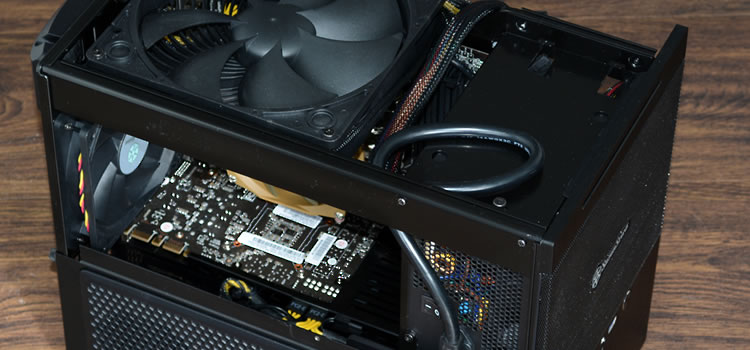Asrock Z87M Extreme4
The Z87M Extreme4 is pretty compact measuring just 244mm x 244mm, offering support for 4th generation Intel Core processors and not skimping on features as you'll learn in a second.
As we have come to expect from the Asrock 8 series range and from our experience with the Asrock Z87 Professional, H87 Performance and Z87E-ITX, the Z87M Extreme4 is a very complete motherboard. The UEFI BIOS is very well laid out making it easy to navigate, there are loads to tweakable options and features.
Asrock always seem to be right on top of BIOS updates and provide numerous methods for applying them. The Internet update feature found in the BIOS simply requires a network connection with Internet access and Asrock takes care of the rest.
Helping to bolster Asrock motherboard’s feature set is the Intel Z87 chipset which supports half a dozen USB 3.0 ports which are controlled by an xHCI (eXtensible Host Controller Interface). There are also six SATA 6Gb/s ports, which is a dramatic improvement over the two ports supported by the 7 series chipsets.
Asrock hasn’t upgraded the standard storage features of the Z87 chipset with any third party controllers. This leaves the Z87M Extreme4 with six SATA 6Gb/s ports supporting RAID (RAID 0, 1, 5, 10, Intel Rapid Storage Technology 12 and Intel Smart Response Technology), NCQ, AHCI and Hot Plug.
There is an eSATA port on the I/O panel which is handy, though keep in mind this port is shared with the first onboard SATA port using port multiplier technology. Both ports can be used simultaneously, but keep in mind this could limit the performance of the drives if they are being accessed at the same time.
Asrock has also relied solely on the Z87 chipset for Z87M Extreme4’s USB 3.0 support limiting the board to six ports. That’s not the end of the USB support, as the board also supports eight USB 2.0 ports.
Providing network support is the new Intel I217V PHY (Physical Layer Device) which is a gigabit copper networking component for mobile, desktop, workstation, and value-server designs that have critical space and power constraints. It supports Intel Remote Wake Technology, Wake-On-LAN, Energy Efficient Ethernet 802.3az and PXE.
Audio is taken care of by the Realtek ALC1150 audio codec which supports 7.1 channel HD audio with content protection. This audio solution features Asrock Purity Sound which includes a 115dB SNR DAC with differential amplifier, TI NE5532 Premium Headset Amplifier (supports up to 600 ohm headsets), Direct Drive Technology, EMI shielding cover and PCB isolate shielding. Finally, DTS Connect is also supported and we have to say for an onboard audio solution Asrock Purity Sound is very nice.
When it comes to graphics there are a few options available. First you have the Intel on-die graphics which at the very least includes the HD Graphics 4600. Asrock provides a number of output options such as D-Sub, DVI-D and HDMI. While the DVI-D and D-Sub connectors only support a maximum resolution of 1920x1200 @ 60Hz, the HDMI connector supports a maximum resolution of 4K × 2K (4096x2304) @ 24Hz. It is also possible to use the three connectors at once for triple monitor support.
Should you choose to go for a more powerful discrete option, as any self-respecting gamer would, there are a pair of PCI Express 3.0 x16 slots available. The Z87M Extreme4 does support AMD Quad CrossFireX, 3-Way CrossFireX and CrossFireX along with Nvidia Quad SLI and SLI. When using a single graphics card the full x16 bandwidth is available. However when using both PCI Express 3.0 x16 slots the bandwidth is reduced to x8 per slot.
Along with the PCI Express 3.0 x16 slots there is a PCI Express 2.0 x16 slot wired for x4 bandwidth and a PCI Express 2.0 x1 slot. There is no legacy PCI support, Intel completely removed it from the LGA1150 platform and Asrock saw no need to include it with a third party controller, which we are happy about.
In the I/O panel there are four USB 2.0 ports, four USB 3.0 ports, a single PS/2 port, VGA port, DVI port, HDMI, eSATA, Ethernet, five audio jacks and an optical output. Noteworthy onboard headers include an IR header, five fan connectors, two USB 2.0 headers for 4 ports and one USB 3.0 header for two ports.













